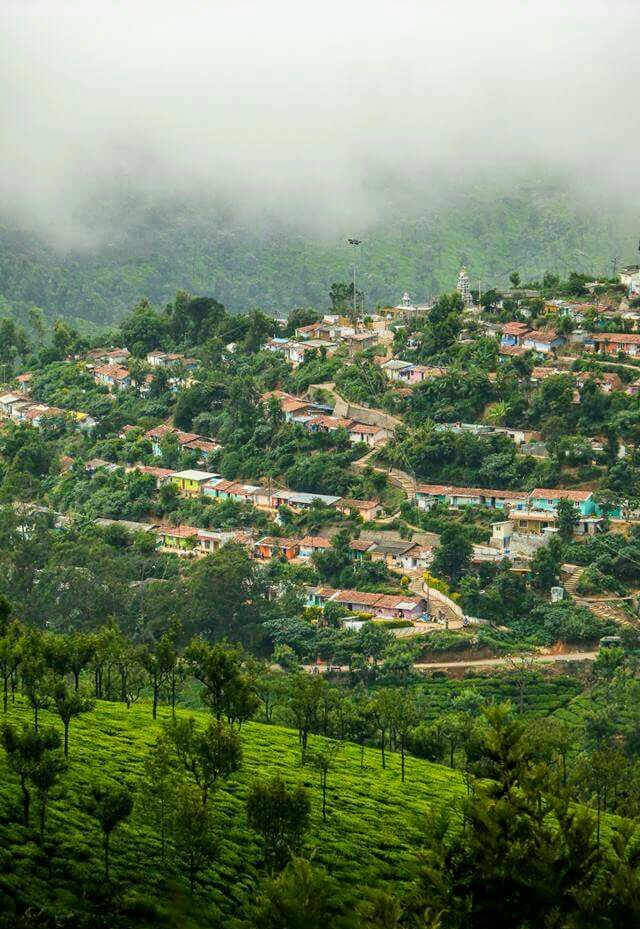Incredible Facts About Ooty That Will Amaze You
Nestled in the Nilgiri Hills of Tamil Nadu, India, Ooty—also known as Udhagamandalam—is often called the “Queen of Hill Stations.” Its lush green landscapes, rolling tea gardens, and serene lakes make it a must-visit destination. But Ooty is not just about scenic beauty; it has a rich history, cultural significance, and unique contributions to daily life and society. In this article, we will explore Ooty in depth, covering its history, facts, frequently asked questions (FAQs), timeline, significance, and how it touches human life.
History of Ooty
Ooty’s history dates back to the early 19th century during British colonial rule. The British were captivated by the cool climate of the Nilgiris and decided to establish a summer retreat to escape the sweltering heat of the plains. This led to the development of the town as a hill station.
Key Historical Milestones:
Pre-British Era: The Nilgiris were originally inhabited by indigenous tribes like the Todas, Badagas, and Kotas. These tribes practiced agriculture and maintained unique cultural traditions.
1819: John Sullivan, a British officer, is credited with founding Ooty as a hill station. He constructed roads, planted gardens, and initiated the settlement of Europeans in the area.
19th Century: Ooty became a popular summer resort for the British, with the establishment of European-style cottages, churches, and schools.
Post-Independence Era: After India gained independence in 1947, Ooty evolved into a tourist destination attracting domestic and international travelers.
Fascinating Facts About Ooty
Here are some amazing facts that make Ooty unique:
Queen of Hill Stations: Ooty is called the “Queen of Hill Stations” because of its breathtaking landscapes and cool climate.
Nilgiri Mountain Railway: A UNESCO World Heritage site, this railway runs from Mettupalayam to Ooty and offers panoramic views of the Nilgiris.
Botanical Garden: Spread over 22 hectares, it houses exotic plants, rare ferns, and vibrant flowerbeds.
Tea Gardens: Ooty is famous for its tea plantations, producing some of India’s finest teas.
Ooty Lake: A man-made lake created in 1824, ideal for boating and picnics.
Flower Festival: Held every May, this festival displays spectacular flower arrangements and attracts tourists worldwide.
Climate: With an average temperature of 10–20°C, Ooty’s cool weather is a major attraction.
Toda Tribe Culture: The Toda tribe, known for their unique lifestyle and embroidered shawls, adds cultural richness to Ooty.
Wildlife: Ooty is near Mudumalai National Park and Mukurthi Wildlife Sanctuary, home to elephants, tigers, and leopards.
Historical Churches: St. Stephen’s Church and other colonial-era structures showcase British architectural influence.
Timeline of Ooty
Pre-1800s: Home to indigenous tribes.
1819: John Sullivan establishes Ooty as a hill station.
1820s-1850s: Development of roads, gardens, and British residences.
1908: Nilgiri Mountain Railway completed.
1947: Ooty becomes a popular post-independence tourist destination.
Present Day: A thriving hub for tourism, culture, and education.
Frequently Asked Questions (FAQs)
Q1. What is the best time to visit Ooty?
A1. October to June is ideal for pleasant weather, sightseeing, and festivals.
Q2. How can one reach Ooty?
A2. By road (bus or taxi), train (via Nilgiri Mountain Railway), or nearby airports (Coimbatore Airport).
Q3. Is Ooty suitable for family trips?
A3. Yes, Ooty offers attractions for all ages, including lakes, parks, gardens, and trekking spots.
Q4. What are must-visit places in Ooty?
A4. Botanical Garden, Ooty Lake, Doddabetta Peak, Rose Garden, Tea Gardens, and St. Stephen’s Church.
Q5. Is Ooty safe for solo travelers?
A5. Generally, yes. The town is tourist-friendly, though usual safety precautions are advised.
Significance of Ooty
Ooty holds multiple forms of significance:
Cultural Significance:
Ooty preserves the traditions of the Toda, Badaga, and Kota tribes, keeping ancient arts, crafts, and rituals alive. Festivals like the Flower Festival add to its cultural vibrancy.
Economic Significance:
Tourism and tea plantations are major contributors to Ooty’s economy. Local artisans, hotels, and transport services benefit significantly.
Environmental Significance:
Ooty’s forests and wildlife sanctuaries play a crucial role in biodiversity conservation. Efforts are being made to protect the fragile ecosystem against over-tourism and deforestation.
Social Significance:
Ooty serves as a leisure hub for families, students, and travelers, encouraging relaxation, community interactions, and cultural appreciation.
Impact of Ooty on Daily Life
Tourism Boost: Local communities benefit economically from hotels, restaurants, and souvenir shops.
Education & Research: The cool climate and natural beauty have inspired research centers and educational institutions, including forestry and botanical studies.
Health Benefits: Ooty’s fresh air and tranquil environment contribute to mental and physical well-being.
Cultural Awareness: Exposure to tribal culture fosters appreciation for heritage and crafts.
Environmental Consciousness: Visitors learn the importance of protecting natural habitats and wildlife.
Observances and Festivals in Ooty
Ooty Flower Festival: Celebrated every May, this festival showcases floral decorations, floats, and cultural performances.
Christmas & New Year: Tourists enjoy festive decorations, music, and local events.
Tea and Coffee Festivals: Occasionally organized to promote local plantation produce.
Conclusion: Why Ooty Matters to Society
Ooty is not just a tourist spot; it is a cultural, ecological, and economic asset. Its history teaches us about colonial influences, tribal traditions, and human adaptation to nature. For society, Ooty represents a place where relaxation, education, and environmental awareness intersect. Visiting Ooty is more than sightseeing—it is an immersive experience in heritage, nature, and human connection.
Whether you are sipping Nilgiri tea while overlooking misty mountains or learning about the Toda tribe, Ooty has a positive influence on your mind, body, and soul. Its importance in daily life and society is clear: it is a source of joy, knowledge, cultural preservation, and economic activity.
Key Takeaways:
Ooty has a rich colonial and tribal history.
It is a hub for tourism, tea plantations, and research.
The town promotes cultural awareness, environmental protection, and social well-being.
Festivals like the Flower Festival enhance its cultural and economic significance.
Ooty is indeed a treasure in the Nilgiris, offering both natural beauty and valuable lessons for society.








